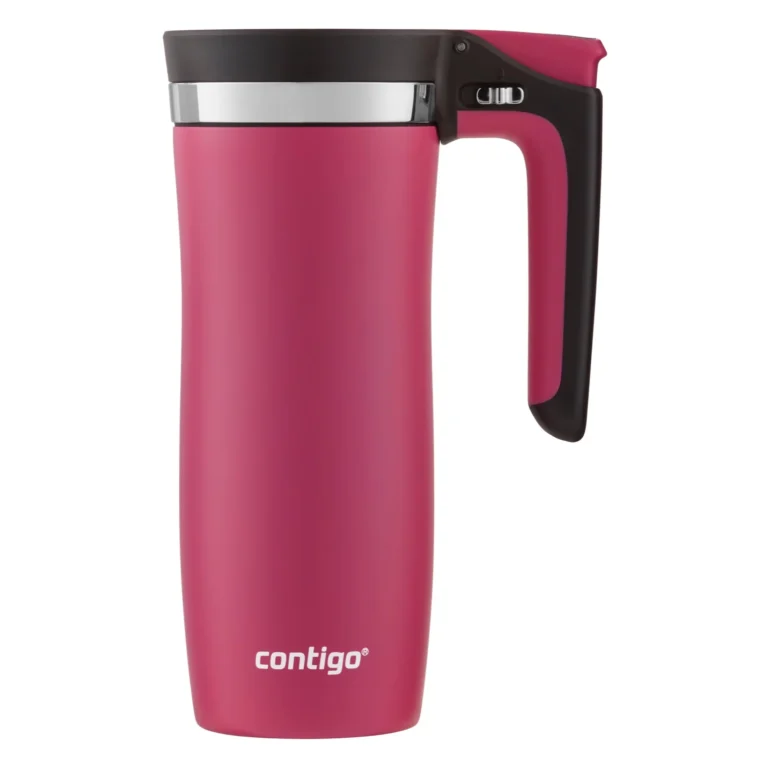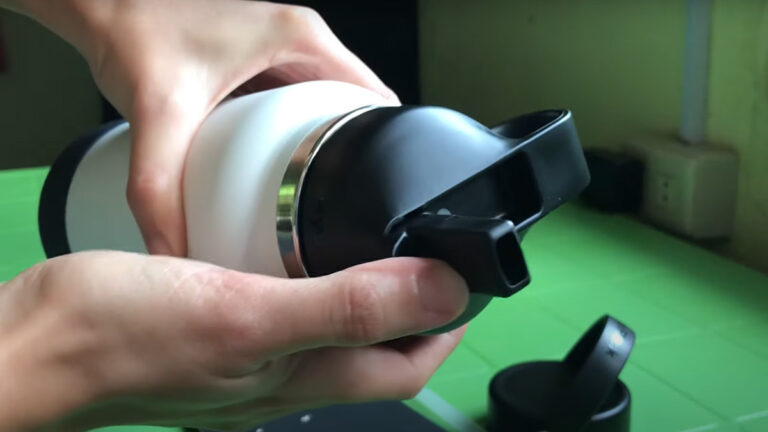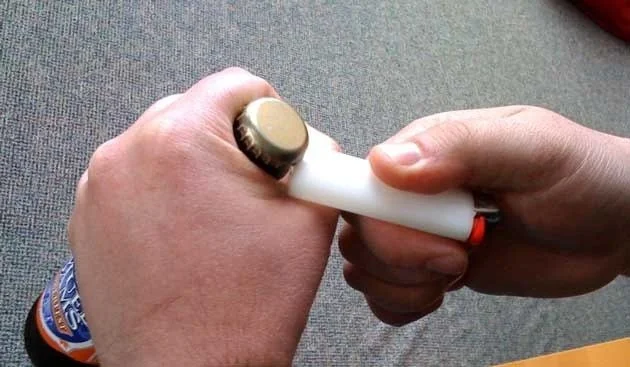Have ever wondered what it takes to make a perfect batch of kombucha? The answer goes beyond just brewing it right – you also need to ensure your supplies are clean and sterilized. After all, kombucha is a controlled growth of bacteria and yeast, and you don’t want the bad germs sneaking in! Cleaning your kombucha bottles may seem like a tedious task, but it’s a crucial step that ensures the delicious success of your brewing process. In this article, we’ll guide you through the process of sterilizing and cleaning your kombucha bottles and supplies, so every sip of your favorite brew is pure and healthy.
How to Clean Kombucha Bottles: A Factual Guide
As a kombucha enthusiast, it’s important to keep your supplies clean to ensure that your fermented tea stays free of bad bacteria. Cleaning your kombucha bottles doesn’t have to be a chore with this factual guide. We’ll go over the importance of keeping your supplies clean, the proper cleaning process, and how to maintain a clean fermentation station.
It’s essential always to keep your brewing supplies clean, as fermentation is a process of balancing good and bad microorganisms. A balance between the two is crucial to ensure delicious kombucha success, so keeping your equipment clean is necessary. Like every cleansing process, there are tips and tricks for keeping your materials sanitized and ready to go.
When cleaning kombucha bottles, it’s crucial to use highly acidic vinegar, as it’s perfect for killing off bad bacteria that may be hiding out in your supplies. You can swish it around the bottles and jugs or pour it over supplies like funnels or spoons.
Another critical step is hot water rinse, which you need to pour carefully into the bottles, jugs, or submerge smaller supplies. Swish it around so that it touches every surface and then pour it out. You should let the supplies cool before pouring in the kombucha.
Remember, maintaining a clean fermentation station doesn’t require much work or upkeep, just a bit of thought into what is coming into contact with your supplies. Happy brewing!
Importance of keeping kombucha supplies clean
Taking care of your kombucha brewing supplies is an essential aspect of maintaining the quality and safety of your brew. By keeping your equipment clean, you can minimize the risk of contamination and ensure a flawless brewing process. Here are some reasons why it is important to keep your kombucha supplies clean:
1. Maintaining the balance of beneficial bacteria and yeast is crucial for a healthy and flavorful brew. Any contamination can disrupt this balance and compromise the taste and quality of your kombucha.
2. Contaminated kombucha can also pose health risks, such as foodborne illnesses or infections. By ensuring that your supplies are clean and sterilized, you can minimize the risk of such hazards.
3. Keeping your equipment clean can also improve the longevity of your supplies. By removing any residue or buildup, you can extend the lifespan of your bottles and prevent the need for frequent replacements.
To ensure that your kombucha supplies are clean, it is important to follow a proper cleaning process. This may involve rinsing your bottles with hot water, using natural cleansers like vinegar, and sterilizing your equipment with distilled white vinegar. By incorporating these cleaning steps into your brewing routine, you can enjoy a safe and delicious batch of kombucha every time.
Overview of cleaning process
When comes to cleaning your kombucha materials, there are a few important steps to follow. First and foremost, it’s crucial to keep your supplies clean in order to prevent bad bacteria from sneaking in. This is especially important when brewing kombucha, as it involves controlling microorganisms to create a delicious and balanced end product. To properly clean your materials, follow these steps:
1. Use highly acidic vinegar: Vinegar is perfect for killing off bad bacteria that may be hiding out on your supplies. Swish it around your bottles and jugs or pour it over your supplies, such as funnels and spoons. Just be sure to avoid raw or apple cider vinegar, which may contain nematodes called vinegar eels.
2. Apply hot water: What the vinegar doesn’t kill, hot water will. Simply pour hot water into your bottles and jugs or submerge smaller supplies in the water. Swish it around so that it touches every surface, then pour out. Let supplies cool before pouring in the kombucha.
3. Maintain cleanliness: With your newly sterilized supplies, it’s important to pay attention to what other materials might be touching your equipment and ensure that they’re also clean. Use paper towels instead of hand towels, avoid using a dirty kitchen sponge, and wash your hands before touching your supplies.
By following these steps and maintaining a clean fermentation station, you can create delicious and healthy kombucha with ease.
Step 1: Vinegar Rinse
A. Importance of using highly acidic vinegar
Using highly acidic vinegar is an essential step in cleaning kombucha bottles, and it has many benefits that make it an effective natural cleaning agent. Here are some of the reasons why you should consider using highly acidic vinegar when cleaning your kombucha supplies:
1. Vinegar is a powerful disinfectant: The high acidity in vinegar makes it an effective disinfectant against harmful pathogens, including mold and bacteria. This is important for maintaining a healthy fermentation process and preventing contamination.
2. Vinegar is a natural and safe alternative to harsh chemicals: Unlike harsh chemicals, vinegar is a natural and biodegradable cleaning agent that is safe to use around your home. It’s also cheaper than commercial cleaning products, making it a cost-effective option for cleaning your kombucha supplies.
3. Vinegar is easy to apply: Applying vinegar to your kombucha bottles and jugs is a simple process that requires only a spray bottle or a sponge. You can also use essential oils to enhance the scent and cleaning power of the vinegar.
4. Vinegar can be used for other cleaning tasks: In addition to cleaning kombucha supplies, vinegar can be used to clean a variety of surfaces, including kitchen counters, floors, and bathroom tiles. It’s a versatile and useful cleaning agent that every household should have.
In conclusion, using highly acidic vinegar is an important step in cleaning your kombucha bottles and maintaining a healthy fermentation process. Its natural and powerful cleaning properties make it an effective, safe, and cost-effective alternative to commercial cleaning products.
B. How to apply vinegar to bottles and jugs
When it comes to cleaning kombucha bottles and jugs, vinegar is a highly effective and natural solution. Here’s how to apply vinegar to your supplies:
1. Choose Highly Acidic Vinegar: When cleaning with vinegar, it’s important to choose a vinegar that is highly acidic. This will help to kill off any bacteria that may be hiding on your bottles or jugs. Avoid using raw or apple cider vinegar, as these may contain nematodes called vinegar eels.
2. Swish or Pour Vinegar: Once you have your vinegar, you can either swish it around your bottles and jugs or pour it over your supplies, such as funnels or spoons. Make sure that every surface is touched by the vinegar. You can also use a spray bottle to apply vinegar to hard-to-reach spots.
3. Wait and Rinse: After applying vinegar, wait for a few minutes to allow it to work its magic. Then, rinse your bottles and jugs with hot water. Swish the hot water around so that it touches every surface and then pour it out. Let the supplies cool before pouring in the kombucha.
Remember to never use antibacterial soap or kitchen sponges, which are laden with bacteria. Instead, opt for a new sponge or paper towels. And always wash your hands before touching your supplies. By following these steps, you can maintain a clean and healthy fermentation station for your delicious kombucha to thrive.
C. Note about vinegar selection
When it comes to cleaning your kombucha supplies, using vinegar is a highly recommended step. However, it’s important to note that not all types of vinegar are suitable for this task. Here are some key points to keep in mind when selecting vinegar for cleaning your kombucha bottles and jugs:
1. Choose highly acidic vinegar with a pH of around 2.5-3.5 for best results. This level of acidity is effective in killing off any bad bacteria that may be lurking in your supplies.
2. Avoid using raw or apple cider vinegar, which may contain nematodes called vinegar eels. These can be harmful to your kombucha culture and may affect its growth and flavor.
3. Opt for distilled white vinegar instead, which is pure and free from any unwanted additives or contaminants.
Overall, using vinegar is an essential step in keeping your kombucha supplies clean and free from harmful bacteria. Just remember to choose the right type of vinegar, and follow the cleaning process carefully to maintain a healthy and thriving kombucha culture. With these tips in mind, you can enjoy delicious, home-brewed kombucha without any worries.
Step 2: Hot Water Rinse
A. Importance of hot water rinse
Hot rinse is a crucial step in the process of cleaning kombucha bottles. Not only does it kill any remaining bacteria, but it also removes any residual vinegar or soap. It is important to use hot water that is at least 180°F to effectively sanitize the bottles.
Here are some reasons why a hot water rinse is important:
1. Eliminates Harmful Bacteria: Hot water is an effective method to kill any harmful bacteria that may be present on the bottles or jugs.
2. Removes Residual Vinegar: Although vinegar is a great cleaning agent, it can sometimes leave behind a residue. This residue can be harmful to the kombucha culture, so it’s important to rinse it off with hot water.
3. Removes Residual Soap: Similar to vinegar, soap can also leave behind a residue that can harm the kombucha culture. It is important to rinse off any soap residue with hot water before using the bottles for brewing kombucha.
To safely pour hot water into bottles and jugs, it is recommended to use a funnel and a pot with a spout. Allow the bottles to cool before using them for making kombucha. Remember, maintaining a clean fermentation station will help ensure the success of your kombucha brewing process.
B. How to safely pour hot water into bottles and jugs
When your kombucha bottles, it’s important to use hot water to sanitize them. However, it’s important to note that you need to be cautious when handling hot water, especially around glass bottles and jugs. Here are some tips on how to safely pour hot water into your kombucha supplies:
1. Heat up water until it is hot but not boiling. Boiling water can cause glass bottles to shatter, so it’s crucial to avoid direct contact with boiling water.
2. Use a funnel when pouring hot water into bottles and jugs. This helps to direct the water and avoid spills or splashes.
3. Hold the bottles and jugs with oven mitts or a thick towel to protect your hands from the heat.
4. Pour the hot water slowly and steadily to avoid any sudden movements that could cause the glass to break.
5. After pouring hot water, let the bottles and jugs cool down before using them with your kombucha. This will prevent any temperature shock that could potentially harm the SCOBY and affect the fermentation process.
By following these simple steps, you can safely sanitize your kombucha bottles and jugs, ensuring a clean and healthy environment for your brew. Remember, maintaining a clean fermentation station is essential for producing high-quality kombucha.
C. Note about cooling supplies before using with kombucha
When comes to cleaning your kombucha supplies, it’s important to not only properly sterilize them but also keep in mind the best practices to ensure their longevity. After using hot water and vinegar to clean your bottles and jugs, it’s essential to let them cool completely to prevent any thermal shock that might damage the glass. Even a small amount of residual heat can negatively impact the SCOBY and ultimately affect the quality of your kombucha.
While it might be tempting to quickly clean and start brewing another batch, taking the time to cool your supplies is worth it in the long run. Consider placing them in a cool, dry area out of direct sunlight to speed up the cooling process. Additionally, be sure to avoid touching the inside of the vessels with your hands after cleaning. By taking these extra steps, you can maintain a clean fermentation station and help ensure your kombucha stays delicious and healthy.
Conclusion
A. Recap of cleaning process
Cleaning your kombucha supplies is crucial for producing delicious and healthy kombucha. The good news is that it doesn’t require too much effort to keep your equipment clean. Here’s a recap of the cleaning process:
1. Rinse your brew vessels and bottles thoroughly in hot water. If there are stubborn pieces stuck to the glass, you can use a clean sponge or scrub brush to remove them.
2. Use dish soap to clean the mouthpieces and remove any residue that’s particularly sticky or gunky.
3. Avoid using antibacterial soap, as it can harm the good bacteria in your kombucha.
4. Use highly acidic vinegar to kill off any bad bacteria on your equipment. Be sure to swish it around your bottles and jugs or pour it over your supplies, such as funnels or spoons. Avoid using raw or apple cider vinegar, which may contain vinegar eels.
5. Follow up with a hot water rinse. Carefully pour hot water into your bottles and jugs, or submerge smaller supplies in the water. Swish it around so that it touches every surface, then pour it out. Let supplies cool before pouring in the kombucha.
6. Lastly, it’s important to maintain a clean fermentation station by ensuring that everything that comes into contact with your supplies is also clean. Rinse your hands with vinegar and warm water before handling your equipment, and opt for paper towels instead of a dirty kitchen sponge.
By following these simple steps, you’ll be able to produce delicious, healthy kombucha every time.
B. Importance of maintaining a clean fermentation station
Maintaining a clean fermentation station is crucial for producing high-quality kombucha and keeping your SCOBY healthy. Here are some reasons why maintaining a clean fermentation station is important:
• Prevent Contamination: A dirty fermentation station can harbor harmful bacteria, yeast, and mold that can contaminate your brew. This can affect the flavor, texture, and quality of your kombucha.
• Promote SCOBY Health: A clean fermentation station ensures that the SCOBY grows and thrives in a healthy environment. Any contaminants can harm the SCOBY and weaken its ability to ferment properly.
• Improve Taste and Aroma: A clean fermentation station offers the perfect environment for your kombucha to ferment, resulting in a better flavor and aroma.
• Meet Health and Safety Standards: Maintaining a clean fermentation station is important for meeting health and safety standards. You want to ensure that your kombucha is safe to consume and free of harmful contaminants.
By following the cleaning process and maintaining a clean fermentation station, you can enjoy delicious, healthy and safe kombucha at home.




